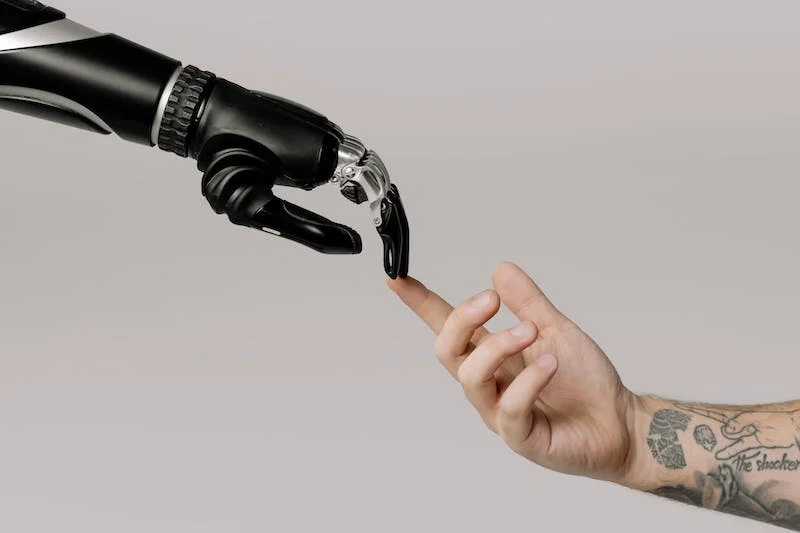AI(artificial intelligence) and Tesla
Artificial Intelligence (AI) plays a central role in Tesla’s electric vehicles (EVs), particularly in its Autopilot and Full Self-Driving (FSD) systems. Tesla has been a pioneer in integrating AI technologies into its vehicles, with the goal of achieving full autonomy. Here’s how AI is applied in Tesla’s vehicles:
- Autopilot and FSD Hardware:
- Tesla vehicles are equipped with a suite of sensors, including cameras, ultrasonic sensors, and radar, which provide extensive data about the vehicle’s surroundings.
- AI(artificial intelligence) algorithms process data from these sensors to enable features like adaptive cruise control, lane-keeping, and collision avoidance.
- Autopilot and FSD Software:
- Tesla uses AI(artificial intelligence)-driven software to enhance its Autopilot and FSD capabilities.
- Machine learning models, neural networks, and computer vision algorithms analyze sensor data to identify and interpret objects, road markings, traffic signs, and other relevant information.
- Driver Assistance Features:
- Tesla’s Autopilot system offers driver assistance features, such as Traffic-Aware Cruise Control and Autosteer, which rely on AI for safe and reliable operation.
- These features assist with tasks like maintaining speed, staying in the lane, and navigating highway interchanges.
- Full Self-Driving (FSD) Features:
- Tesla’s FSD package includes advanced features like Navigate on Autopilot, which offers more extensive assistance for highway driving, including automatic lane changes and highway exits.
- Tesla plans to continue expanding FSD features, with the goal of achieving fully autonomous driving in the future.
- Over-the-Air (OTA) Updates:
- Tesla uses AI(artificial intelligence) and machine learning to improve its vehicles’ AI(artificial intelligence) systems over time through OTA software updates.
- This approach allows Tesla to continuously enhance its vehicles’ capabilities, refine algorithms, and address safety and performance issues.
- Data Collection and Sharing:
- Tesla collects extensive data from its fleet of vehicles in the real world. This data is crucial for training AI(artificial intelligence) models, improving safety, and refining autonomous driving systems.
- Tesla Dojo Supercomputer:
- Tesla has developed a dedicated AI training supercomputer called “Dojo.” It’s designed to process large amounts of data and train AI models faster and more efficiently.
- Robo-Taxi Network (Planned):
- Tesla envisions building a network of self-driving electric vehicles that can operate as robo-taxis, providing rides without human drivers.
- AI(artificial intelligence) is central to the realization of this vision, as it must enable safe, reliable, and efficient autonomous operation.
It’s important to note that while Tesla’s AI(artificial intelligence)-driven features are highly advanced, full autonomy remains a complex and challenging goal. Regulatory approval and the development of AI(artificial intelligence) that can handle all driving scenarios without human intervention are key milestones that must be achieved before fully autonomous driving becomes a reality. Tesla continues to work on advancing its AI(artificial intelligence) technologies and expanding its capabilities through software updates and iterative improvements.

Tesla’s artificial intelligence research
As of my last knowledge update in September 2021, Tesla has been actively involved in artificial intelligence (AI) research, particularly in the context of autonomous driving and improving the capabilities of its electric vehicles (EVs). Here are some key aspects of Tesla’s AI research and initiatives up to that point:
- Autonomous Driving:
- Tesla’s primary AI(artificial intelligence) research focus is on developing autonomous driving technology. They are working on creating self-driving cars capable of handling a wide range of real-world driving scenarios.
- Tesla’s Autopilot and Full Self-Driving (FSD) systems use AI(artificial intelligence) and machine learning algorithms to process data from vehicle sensors and make driving decisions.
- Data Collection and Fleet Learning:
- Tesla’s fleet of vehicles serves as a valuable source of data for AI research. The company collects data from its vehicles in the real world, using it to train and improve AI models.
- The vast amount of data generated by Tesla’s vehicles helps refine autonomous driving algorithms, detect edge cases, and enhance overall safety and performance.
- Deep Learning and Neural Networks:
- Tesla employs deep learning techniques and neural networks to process and interpret data from sensors like cameras, radar, and ultrasonic sensors.
- Neural networks are used for object recognition, lane detection, path planning, and other critical tasks involved in autonomous driving.
- Hardware Development:
- Tesla designs custom hardware to support its AI research and autonomous driving goals. This includes AI-specific chips, such as the Tesla Full Self-Driving Computer (FSD Computer).
- The development of hardware optimized for AI inference and training is crucial for achieving the desired levels of processing power and efficiency.
- Over-the-Air (OTA) Updates:
- Tesla frequently releases OTA software updates to improve the capabilities of its vehicles. These updates often include enhancements to AI-based features like Autopilot and FSD.
- Tesla’s approach allows it to continuously update and refine AI algorithms and respond to real-world driving data.
- Tesla AI Day:
- In August 2021, Tesla held an “AI Day” event to showcase its AI research and recruit AI talent. During the event, Tesla discussed its AI training supercomputer, “Dojo,” and the importance of AI in achieving full self-driving capabilities.
- Robo-Taxi Network Vision:
- Tesla has expressed a vision for a “Tesla Network” of self-driving robo-taxis. AI research and development play a critical role in realizing this vision, as it involves creating a safe, efficient, and fully autonomous ride-sharing platform.
Please note that developments in AI research and technology can change rapidly, and Tesla’s initiatives in this field may have evolved since my last knowledge update in September 2021. It’s advisable to refer to the latest news and official announcements from Tesla for the most up-to-date information on their AI research and autonomous driving efforts.




